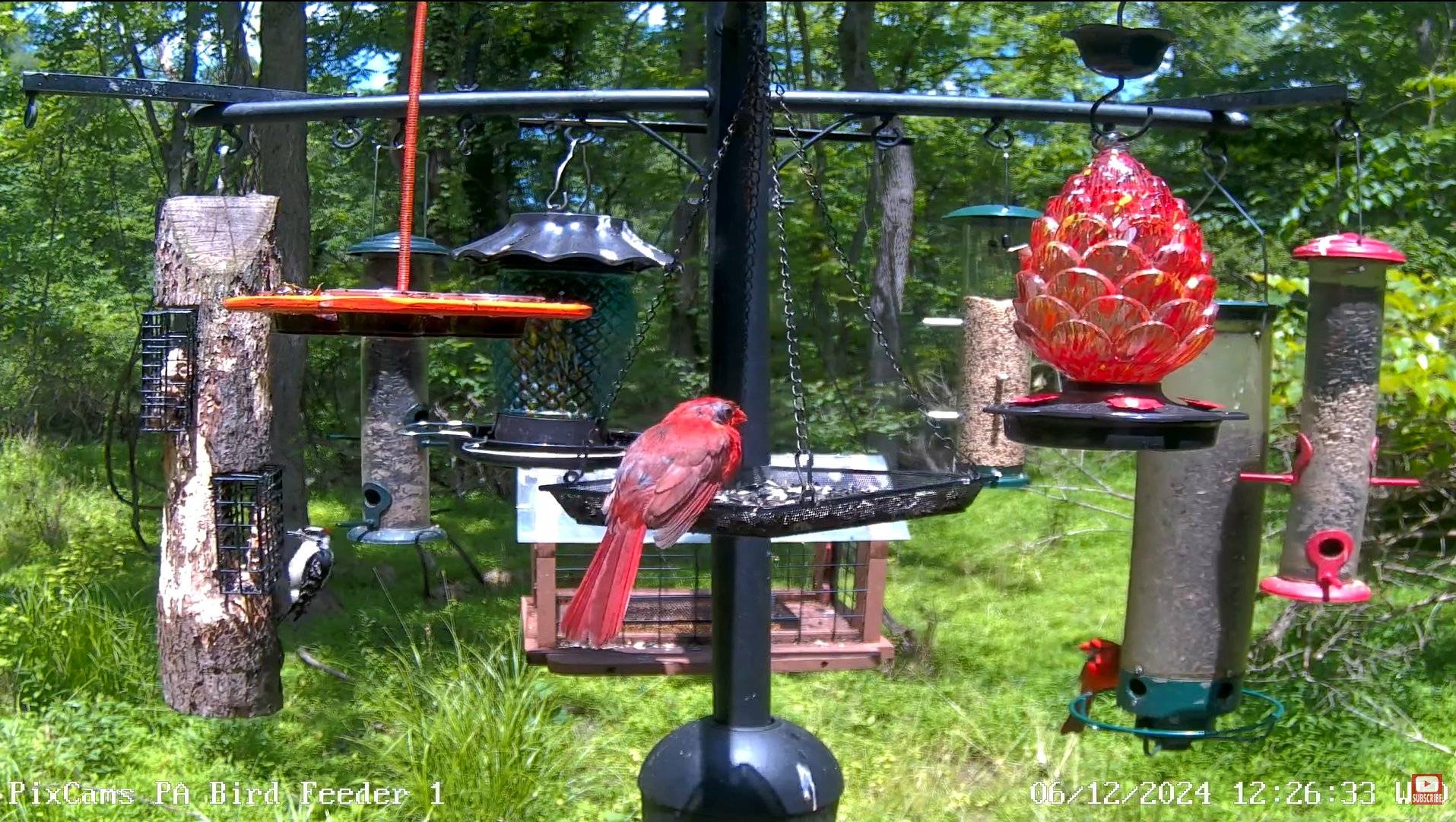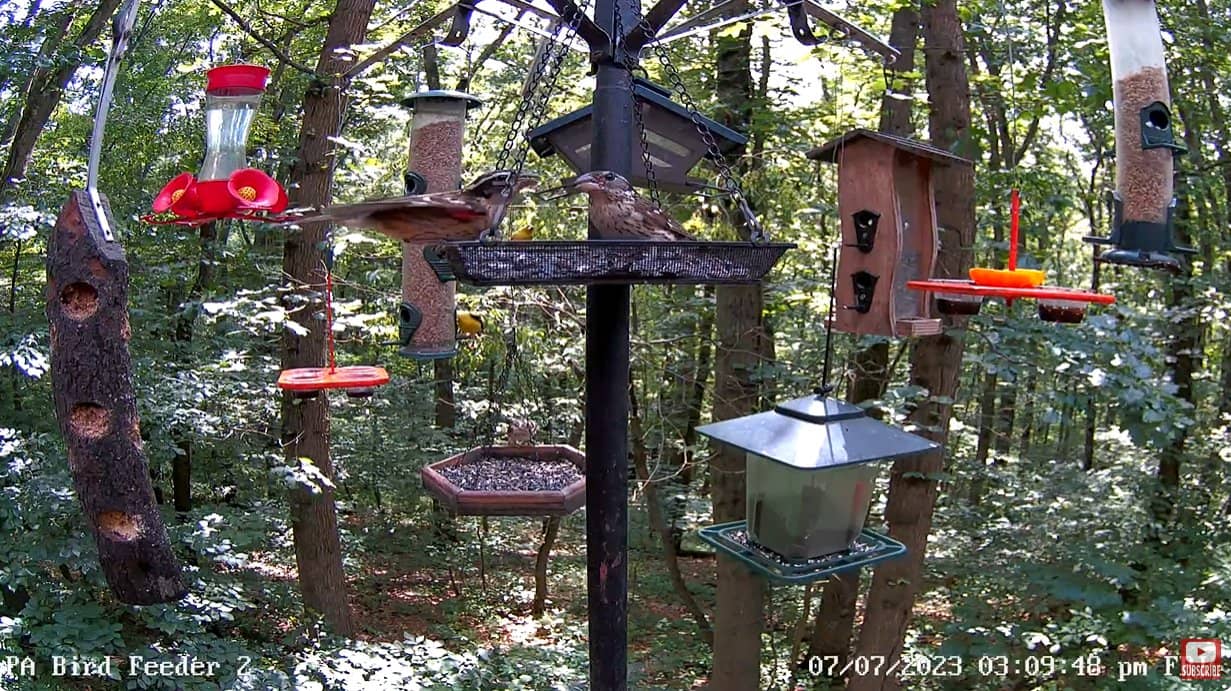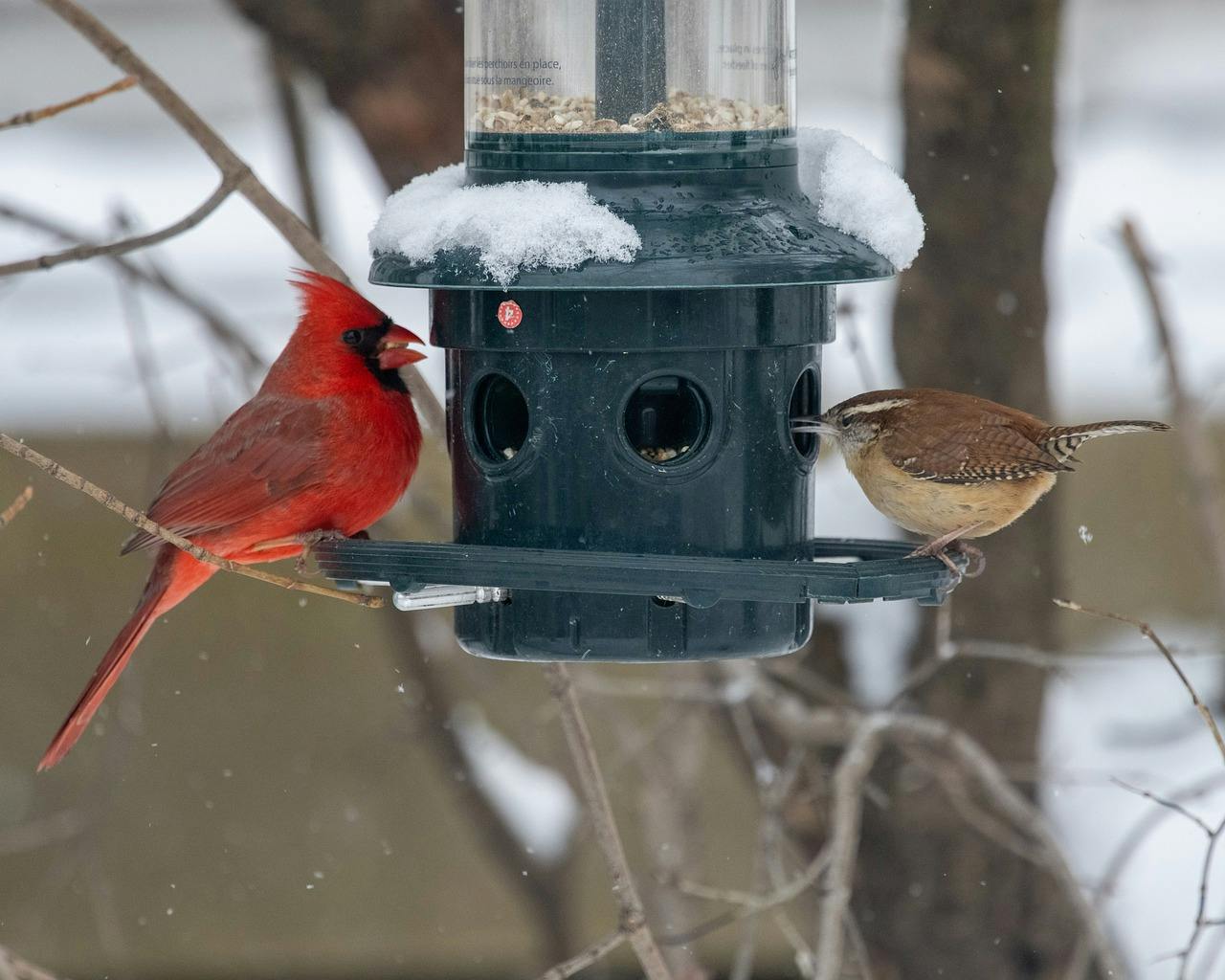About the Northern Cardinal
The Northern Cardinal is one of North America’s most easily recognized and admired birds, thanks to its striking appearance and melodic song. Males boast brilliant red plumage and a distinctive black mask that extends from the face down to the throat. Females, while not as vividly colored, have a beauty of their own with their warm brown feathers tinged with red on the crest, wings, and tail. Both sexes have a prominent crest on their heads and a strong, conical beak that is perfectly suited for cracking seeds.
This species is widely distributed across the eastern and central United States, extending into southeastern Canada and as far south as Mexico and Central America. Unlike many bird species that migrate seasonally, Northern Cardinals are non-migratory and stay within their range throughout the year. This year-round presence means that they are a familiar and welcome sight even during the colder months when many other birds have migrated to warmer climates. Cardinals often bring a vivid splash of color to snowy winter landscapes, brightening up otherwise monochromatic scenes.
Northern Cardinals are also known for their vocal abilities. Both males and females sing, a trait that is somewhat unusual among songbirds where typically only males are known for their vocalizations. Their songs consist of a series of clear, whistling notes that can vary widely. They also have a variety of calls used for communication, such as alerting each other to predators or signaling their readiness to mate. During the breeding season, which runs from March to September, males are particularly vocal and use their songs to establish and defend their territory.
These birds are monogamous and often form long-term pair bonds, with some pairs staying together throughout the year. They exhibit interesting courtship behaviors, including mate feeding, where the male feeds seeds to the female as a part of their bonding ritual. The female is primarily responsible for building the nest, which is typically located in dense shrubs or low trees. She lays three to four eggs per clutch, and both parents participate in feeding the chicks once they hatch. Cardinals can have multiple broods in a single breeding season, contributing to their stable population numbers.
A State Bird
Beyond their natural beauty and intriguing behaviors, Northern Cardinals hold significant cultural value. They are the state bird of seven U.S. states—Illinois, Indiana, Kentucky, North Carolina, Ohio, Virginia, and West Virginia—highlighting their popularity and symbolic importance. In many cultures, seeing a cardinal is considered a sign of good luck, and they are often thought to be spiritual messengers, bringing comfort to those who see them as a sign from a departed loved one.
How can you attract cardinals?
Northern Cardinals are predominantly seed eaters, with a particular preference for sunflower seeds, but they also consume a variety of fruits and insects. This diet makes them frequent visitors to backyard feeders, where they are a delight to observe. Their presence can also be an indicator of a healthy ecosystem, as they thrive in areas with abundant vegetation and food sources.
10 Proven Tips to Attract Cardinals
Tip 1: Use the Right Feeders
Cardinals prefer feeders with a large, sturdy perch or a flat surface. Platform feeders, hopper feeders, and tray feeders are ideal. Avoid feeders with small perches or cages that might deter them.
Your feeders need to be sturdy enough to support the birds. the weight of a Cardinal is approximately equal to 9 U.S. nickels (1.5 ounces), which is actually on the heavy side for a feeder bird. In fact, lightweight, hanging feeders are best avoided because they may sway under a Cardinal’s weight. Platform feeders and bird feeders with built-in trays that provide enough space to perch are usually preferred. Cardinals are broader, full-breasted birds, so they require more space when visiting a feeder.
Tip 2: Provide Their Favorite Seed
Northern Cardinals feature a strong, thick beak, which is perfect for large seeds and other hearty foods. Cardinals love sunflower seeds, particularly black oil sunflower seeds. Safflower seeds are also a favorite and have the added benefit of being less attractive to squirrels. These are the type of seeds we would recommend:
Black Oil Sunflower Seeds: These are a top favorite for cardinals. They have a high oil content, which provides more energy, and their thin shells are easy for cardinals to crack open with their strong beaks. This type of seed is highly recommended for attracting cardinals.
Safflower Seeds: Cardinals also enjoy safflower seeds. These seeds are slightly smaller than sunflower seeds and have a bitter taste that deters squirrels and other less desirable birds. Safflower seeds are a good option for attracting cardinals while keeping other pests at bay.
Striped Sunflower Seeds: Although not as popular as black oil sunflower seeds, striped sunflower seeds are still a good option. Their thicker shells may be more challenging for some birds, but cardinals can handle them with ease.
Peanut Pieces: Shelled and unsalted peanut pieces are another good option. They provide a high-energy food source and are particularly attractive to cardinals.
Tip 3: Place Feeders at the Right Height
Position feeders at about 5-6 feet off the ground. This height is convenient for cardinals and keeps them relatively safe from ground predators. Because Northern Cardinals prefer to have protective cover when feeding, you should place food sources near trees and shrubbery in your backyard. They will enjoy the foliage and feel safer with these hiding spots nearby. If squirrels aren’t a problem in your yard, you can also scatter seed on the ground for the shyest Cardinals to enjoy.
Tip 4: Ensure Proper Feeder Location
Place feeders near shrubs or dense foliage. Cardinals like to have nearby cover for quick escape from predators. Avoid placing feeders in open, exposed areas.
Tip 5: Keep Feeders Clean and Stocked
Regularly clean feeders to prevent the spread of disease and ensure they are always filled with fresh seeds. Cardinals are creatures of habit and will return to a reliable food source.
Tip 6: Provide Fresh Water
Offer a birdbath with fresh water for drinking and bathing. Cardinals are attracted to water sources, especially if they are kept clean and refilled regularly. Consider a birdbath with a shallow basin and gentle sloping edges. Providing birdbaths is the perfect way to satisfy this need. As with the feeders, a birdbath needs to accommodate the size of these larger birds. Baths with a depth of 2 to 3 inches at the deepest point are usually best. To attract Cardinals to your birdbaths, you may consider adding drippers to keep the water moving. Keep in mind, whichever method you choose, water should be changed, and vessels should be cleaned frequently to prevent algae and dirt buildup.
Tip 7: Offer Protective Shelter
Cardinals enjoy secluded areas surrounded by thick foliage with lots of trees and shrubs. Planting trees and bushes of varying heights will help these songbirds to feel safe and protected. Make sure to include evergreen trees and other plants that will be able to provide cover during the sparser winter months as well.
Tip 8: Encourage Nesting Sites
Unlike many other backyard birds, Cardinals will not use birdhouses or nesting boxes. In addition to enjoying dense plant life for shelter, they also prefer it for nesting. Grapevines, tall trees, and shrub thickets are ideal options for nest sites. Readily available nesting materials are also essential to encouraging long-term Cardinal nesting. Make sure that your yard features pine needles, small twigs, grass clippings, and other materials so that Cardinal visitors will build a nest nearby.
Tip 9: Offer Nesting Materials
Cardinals build nests using twigs, leaves, and grasses. You can help by placing small piles of nesting materials around your yard. Avoid using synthetic materials that can be harmful.
Tip 10: Plant Native Vegetation:
Cardinals are attracted to native plants that provide natural food sources and shelter. Plant berry-producing shrubs like dogwood, sumac, and elderberry. Also, consider plants that produce seeds, such as sunflowers and millet. Reduce or eliminate the use of pesticides in your yard. Cardinals feed on insects, especially during the breeding season when they need to provide protein for their chicks. A pesticide-free yard provides a healthier environment for them to thrive.
PixCams Recommended Products
The following are a few feeders and seeds we have used and recommend for attracting and feeding cardinals:
Nature’s Way Cedar Platform Tray Bird Feeder 12″ x 12″ Click here to Purchase
Solutions4Padio Cedar Hopper Feeder with Suet Cages Click here to Purchase
Yankee Flipper Squirrel-Proof Bird Feeder Click here to Purchase
Kaytee Black Oil Sunflower Seed Click here to Purchase
Safflower Bird Seed Click here to Purchase
Watch Cardinals Live on PixCams
At PixCams.com we provide several bird feeding station live cams. These are several feeders we recommend watching to see cardinals live!
 PA Bird Feeder 1 PA Bird Feeder 1 |
https://pixcams.com/pa-bird-feeder-1/
 PA Bird Feeder 2 PA Bird Feeder 2 |
https://pixcams.com/pa-bird-feeder-2/
|
PA Bird Feeder 3 Close-Up View
|
https://pixcams.com/pa-bird-feeder-3/
https://pixcams.com/lujiigarden-bird-feeder-cam/


